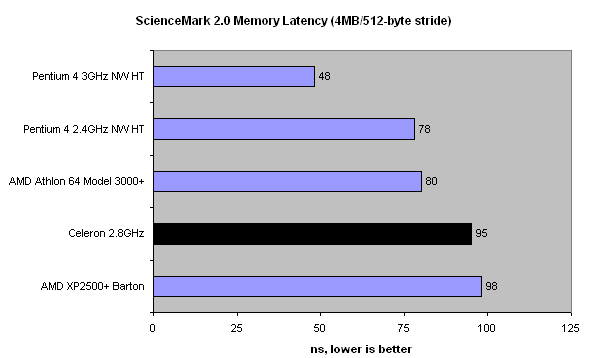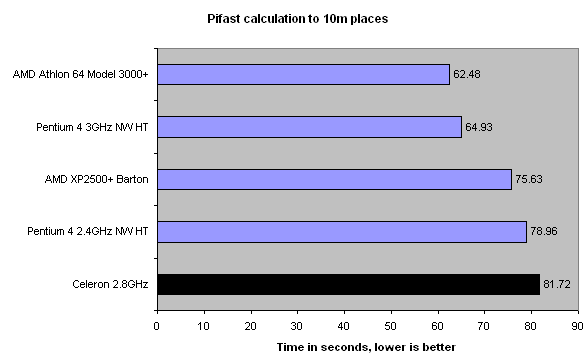ScienceMark 2.0, Pifast
Memory benchmarks lead the way. They usually carry a lot of useful information with respect to performance. With the Celeron's stunted core, however, ScienceMark 2.0 analysis won't reveal all.
The 100MHz FSB Celeron offers up a theoretical 3.2GB/s of bandwidth, half that of the 200MHz Front-side bus Pentium 4s. Almost 2.3GB/s of bandwidth is poor in relation to the other CPUs on the test, and even the double-pumped Barton XP2500+ manages to eke out an advantage. It is running off a 166MHz FSB, however.

ScienceMark 2.0's latency analysis doesn't look too kindly upon the Celeron. This isn't helped by the test motherboard, a DFI i865PE LANPARTY, forcing a dual-channel DDR266 mode. The inevitable clock buffering between a 100MHz FSB CPU and 133MHz (DDR266) memory will add to the latency factor.

Notice how a '2.4GHz' Pentium 4 is able to outpace the Celeron in Pifast, the constant calculator to 10m places. That's what double the FSB, higher speed memory, bigger and better cache, and other improvements do. AMD's 1.833GHz Barton also show the Celeron the way to go.









